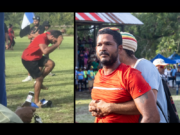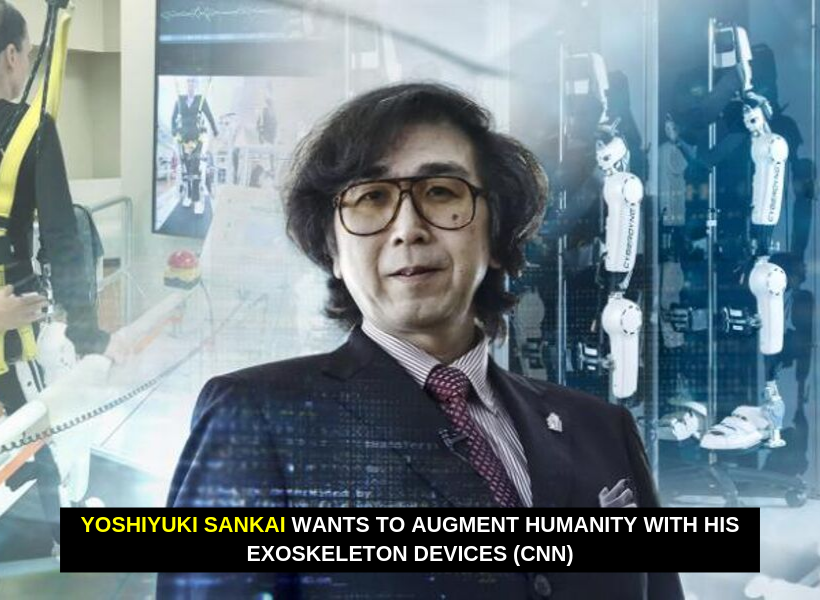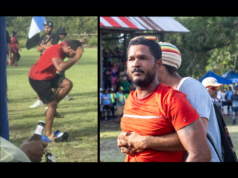Medical Breakthrough…
As we continue to bring you astounding medical breakthroughs that are helping to revolutionise the way we see medicine in these times, today we highlight one of the latest that could see the immobile person becoming mobile, but without a wheelchair.
CNN broke with this latest breakthrough in Tokyo this past week and it would be remiss of us not to bring it to your attention forthwith.
In an article jointly authored by three of its contributors, Emiko Jozuka, Jane Sit and Will Ripley, CNN reported the story of a woman who became paralyzed from her neck down and never imagined that she would be able to walk again. Her condition was linked to the Guillain Barre syndrome which is said to be a rare disorder that affects the body’s nervous system.
According to reports, Guyana has had one case of this condition following on the heels of the 2016 Zika Virus outbreak. It is believed that the virus could, in rare cases, cause the development of this condition.
But there is hope even for such severely paralyzed persons.
According to the recent report, Kristen Sorensen was 55 when she became paralyzed from the neck down last year. She was diagnosed with the Guillain Barre syndrome in 2018.
“It came out of nowhere,” says Sorensen. “I’d been fine and exercising every day, but it just started with tingling in my fingertips then progressed.”
The Brooks Cybernic Treatment Center in Jacksonville, Florida, became the first US center to use a unique rehabilitative technology developed in Japan — the Hybrid Assistive Limb (HAL).
HAL — essentially a wearable cyborg — helps those with spinal cord injuries and muscular dystrophy regain their movements and strengthen their nerves and muscles. Known as exoskeletons, they’re a type of lightweight suit, with joints powered by small electric motors, that serve as mechanical muscle.
Here’s what’s truly mind-blowing: Patients use their brain waves to control them.
When Sorensen heard about the brain wave-controlled exoskeleton, which was developed by Japanese roboticist Yoshiyuki Sankai, she knew she had to give it a try. She was determined to walk at her daughter’s wedding a few months later.
When Sorensen first tried HAL, she could barely move across flat surfaces.
A trained physiotherapist at the Brooks Center helped her fit HAL over her waist and trousers, connecting her to sensors that help pick up faint bio-electric signals on the surface of the skin, which communicate a patient’s intention to move. Once HAL receives these signals, it helps support the person’s movements.
But you can’t just put on HAL and expect to be sprinting in seconds. Rehabilitation requires time, determination and the help of a physiotherapist and a body weight harness that ensures patients are supported and kept upright while they use HAL on a treadmill. During that training, physiotherapists keep a log of each patient’s motions and the settings used — from walk to jog mode. They can monitor the user’s movements and adjust the settings accordingly, so their movements come more naturally.
Sorensen says it initially felt like HAL was doing most of the work by helping induce her muscles to make small leg movements that mimic natural walking patterns, but then she found herself increasingly in the driving seat.
“After the first couple times, your brain connects to HAL, and I could see I was moving my legs myself,” she says. “It was just incredible — my heart was just bursting.”
Usually it takes those with less severe mobility issues than Sorensen between two to 10 tries for patients to get used to HAL so that the sensors and the brain can start working together, Sankai told CNN. But after almost 40 training sessions, each lasting an hour-and-a-half, Sorensen was back on her feet, albeit with the support of a walker. She made it to her daughter’s wedding.
Currently, Sankai’s exoskeletons are helping patients restore their muscle movements in Japan, the Philippines and in Germany and Poland.
But it’s not just those with disabilities or injuries who stand to benefit from this breakthrough.
By 2050, there will be more than two billion people over age 60, according to the World Health Organization (WHO), and exoskeletons could offer a solution to the world’s aging population.
In the future, as human bodies wear down with age, an exoskeleton — powered by active minds — could help people stay on their feet.
With such huge potential applications available, the global medical exoskeleton market will be worth an estimated $2.8 billion by 2023, according to research company Markets.











